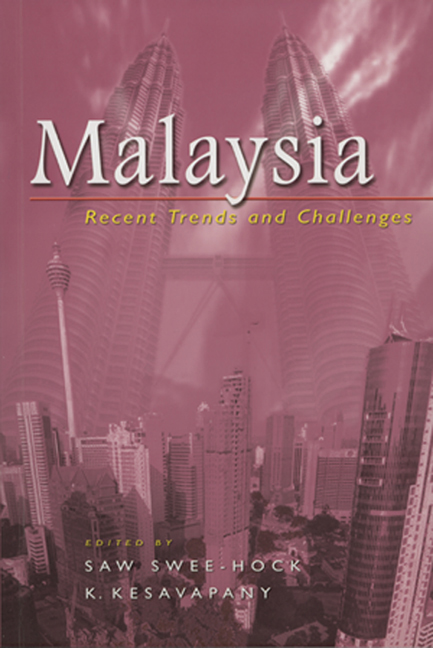Book contents
- Frontmatter
- Content
- Preface
- Foreword
- Contributors
- 1 Population Trends and Patterns in Multiracial Malaysia
- 2 The Emerging Politics of Islam Hadhari
- 3 Bangsa Malaysia: Vision or Spin?
- 4 The 2004 Malaysian General Elections: Economic Development, Electoral Trends, and the Decline of the Opposition
- 5 The UMNO-PAS Struggle: Analysis of PAS's Defeat in 2004
- 6 The Malay Electorate in 2004: Reversing the 1999 Result?
- 7 UMNO and BN in the 2004 Election: The Political Culture of Complex Identities
- 8 Malaysia's Civil Service Reform: Mahathir's Legacies and Abdullah's Challenges
- 9 Reinventing Governance in Corporate Malaysia: The Challenges Ahead
- 10 Globalisation and Ethnic Integration in Malaysian Education
- 11 Globalisation and the Challenges Facing Malaysia's Economy
- 12 Promising Start to Malaysia-Singapore Relations
- Bibliography
- Index
10 - Globalisation and Ethnic Integration in Malaysian Education
Published online by Cambridge University Press: 21 October 2015
- Frontmatter
- Content
- Preface
- Foreword
- Contributors
- 1 Population Trends and Patterns in Multiracial Malaysia
- 2 The Emerging Politics of Islam Hadhari
- 3 Bangsa Malaysia: Vision or Spin?
- 4 The 2004 Malaysian General Elections: Economic Development, Electoral Trends, and the Decline of the Opposition
- 5 The UMNO-PAS Struggle: Analysis of PAS's Defeat in 2004
- 6 The Malay Electorate in 2004: Reversing the 1999 Result?
- 7 UMNO and BN in the 2004 Election: The Political Culture of Complex Identities
- 8 Malaysia's Civil Service Reform: Mahathir's Legacies and Abdullah's Challenges
- 9 Reinventing Governance in Corporate Malaysia: The Challenges Ahead
- 10 Globalisation and Ethnic Integration in Malaysian Education
- 11 Globalisation and the Challenges Facing Malaysia's Economy
- 12 Promising Start to Malaysia-Singapore Relations
- Bibliography
- Index
Summary
Introduction
In the 1956 Razak Report, two important roles were assigned to education in Malaysia: to facilitate economic development and nation building, or ethnic integration. In the aftermath of the May 1969 ethnic riots, however, education also became a key vehicle designated by the state to advance its New Economic Policy (NEP) goal to achieve economic growth with equity, especially equity in terms of gradually eliminating the economic participation identification with ethnicity. Thus, since 1971 education in Malaysia was expected to perform potentially contradictory overlapping objectives: support economic growth while expanding Malay economic participation, and foster national integration while building a Malay-dominated nation.
State planners, aware of the inherited divisive and latently explosive multi-ethnic society, had always regarded facilitating ethnic integration in the newly-independent nation as an important role of education. The central dilemma encountered in developing an education system to facilitate ethnic integration in Malaysia was how to juxtapose the promotion of Malay as the medium of instruction with guaranteeing the Chinese and Indian their rights to be instructed in their mother tongues. To foster national integration and cement the ethnically-diverse society, state planners also argued that it was necessary to create a set of common values. While this view was not in dispute, nevertheless, what were and who defined the “common values” was rigorously debated and contested. A prevalent view regarded education as a means to preserve, transmit, and develop each ethnic group's language and culture. This view influenced non-Malay communities to regard the policy to build a predominantly Malay-medium education system as a move that would curb mother tongue education and lead to a gradual demise of their values, languages, and cultures.
To help increase Malay participation in the economy, education was assigned the role of improving the skill levels and varieties, especially in the management, technical, and scientific fields, of the Malay labour force. This was to be achieved through a variety of ethnic preferential policies and programmes, including ethnic quota, to increase Malay enrolment in higher education.
- Type
- Chapter
- Information
- MalaysiaRecent Trends and Challenges, pp. 230 - 259Publisher: ISEAS–Yusof Ishak InstitutePrint publication year: 2005



